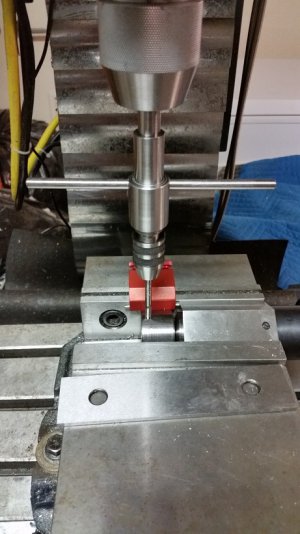- Joined
- Dec 18, 2013
- Messages
- 2,368
Yes Bill availability is the problem. I live out in the boon docks and there is no small lot supplier unless I make a 50 mile trip. So I'm limited to TSC and Fastenal for metal at the moment. I'm sure once I start turning more material making a trip to a proper supplier will be worth while. But for now I'm restricted to whats available locally. For now I'll most likely be going with material that is 1/6 over size so I can get a nice finish.
You have a Metal Supermarkets in Hamilton, they sell small quantities by the inch with free cutting. I raided my local Metal Supermarkets rem pile yesterday and scored some nice stainless priced by the pound.
http://metalsupermarkets.com/hamilton/


